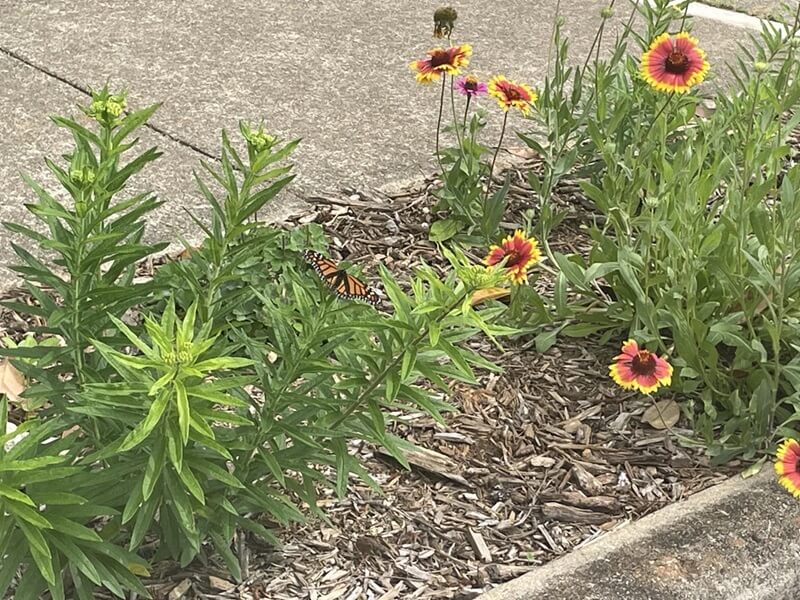There are avenues to cultivate beauty all around us — if we have the creative spark to look for them.
For example, this Redditor transformed their hellstrip — the nondescript strip of grass between the sidewalk and the street — into a "pollinator strip" replete with bright flowers. And they shared a photo of a reward for their labor to the subreddit r/NativePlantGardening.
In the photo, a monarch butterfly sits atop one of the plants in the pollinator strip.

"This is the first documented Monarch use of the milkweed I planted from seed last year," the original poster wrote in the comments. "I looked like a big doofus to my neighbors when I stripped the sod and planted pollinators (70% native) in the hellstrip. But yea this makes it all worth it."
According to Monarch Watch, there are 73 species of milkweed native to North America, and monarch butterflies utilize around 30 of these species as home plants. This Redditor says their garden also includes blanket flowers and pink zinnias.
In addition to adding a splash of color and beauty to otherwise unsightly patches of land, native plants create food and shelter for local wildlife and a healthier ecosystem for pollinators all year round — as demonstrated by this Redditor. Non-native plants may not be edible to pollinators or may not meet their pollination needs.
Creating habitats for pollinators benefits humans, too, as pollinators protect our food supply and help keep our world beautiful. The U.S. Department of Agriculture notes that three-quarters of flowering plants and more than one-third of food crops rely on these creatures.
Growing native plants can also save us money and time on lawn maintenance, conserve water, and lower our water bills, as well as bring us all the joy that comes with gardening.
Eco-friendly, low-maintenance ways to incorporate native plants onto our properties and to work in tandem with our region's climate include planting buffalo grass and xeriscaping. Even a partial lawn replacement — or a hellstrip — can allow us to reap these benefits.
🗣️ If you were to switch from a grass lawn to a more natural option, which of these factors would be your primary motivation?
🔘 Making it look better 🌱
🔘 Saving money on water and maintenance 💰
🔘 Helping pollinators 🐝
🔘 No way I ever get rid of my lawn 🚫
🗳️ Click your choice to see results and speak your mind
Other Redditors took to the comments section to sing the little garden's praises and share their own hellstrip stories.
"Yes!!" one user commented. "[It's] the little victories that count."
"Nice! My hell strip is in deep shade, so I have blue-stemmed goldenrod, Christmas fern, wood poppy, golden ragwort, wild ginger, and native violets. The goldenrod colors in fall really pop!" another said.
"Nice work!" someone else wrote. "Now do some guerrilla native pollinator plant gardens around town."
Join our free newsletter for easy tips to save more, waste less, and help yourself while helping the planet.









